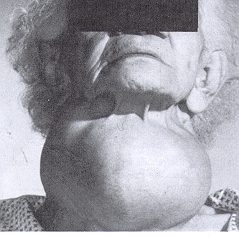wikiHow to Maintain Weight Loss
Losing weight is hard. Keeping weight off is just as hard. However, the same strategies you used to lose weight -- eating right and working out -- can be used to maintain your weight at a healthy level. Carry the energy and motivation you had while losing weight into your effort to maintain a healthy weight.
Steps
Part 1 Motivating Yourself to Keep Weight Off
- 1 Weigh yourself regularly. You’re probably already doing this in order to psych yourself up about your weight loss and keep going further. Once you’ve reached your target weight, however, some people feel that it’s “mission accomplished” and stop monitoring their weight. Don’t be one of those people. If you weigh yourself regularly -- for instance, every time you get home from the gym -- you’ll remain vigilant for extra pounds that are sneaking their way back onto your body.[1]
-
2
Think back on your weight loss accomplishments to motivate yourself.
[2] There’s no getting around the fact that staying healthy and fit requires a huge commitment of mental strength and a positive attitude. But if you’ve already lost the weight you struggled to get rid of, you’ll know that the victory wasn’t easy. You put time, sweat, and pain into your weight-loss program, and you don’t want to do anything to mess it up. Think about these sacrifices when preparing to maintain your specific diet and exercise regimen.
- Keep photos which depict you when you were overweight. Place them in a central location like on your refrigerator door so that when you feel yourself slipping, you’ll have a visual reminder of the body you’ve left behind and don’t want to go back to.
- 3 Reflect on your future health to motivate. Besides thinking about the bad things you went through to get to where you are today, think about how weight loss has enhanced your life. For instance, think about how you have more energy, more confidence, feel stronger, and are more fit overall than when you started your weight loss journey.[3] Envision a future where you are free of obesity, heart disease, high blood pressure, and the other ailments which often plague overweight individuals.
- 4 Join a weight loss support group. [4] There are online support groups and face-to-face groups. With face-to-face groups, you can get immediate responses to your situation, encouragement, and the feelings of camaraderie that come with such meetings. With the online support groups -- forums and chatrooms -- you might have to wait a bit before someone responds, though the potential network of people who respond is obviously much wider. When participating in either type of support group, be specific about your problem so you can get the best, most accurate help from people who have been there before. For instance, don’t vaguely say, “I’m gaining weight.” Explain how long you’ve been gaining weight, what changes you’ve made to your diet regiment, and so on which may be connected to the weight gain.
-
5
Be aware of your body's limitations. Humans are varied at the genetic level, and these genetic differences affect how easily and quickly your body loses or (re)gains weight. Similarly, if you were or are very obese, you triggered changes in your body which altered its internal chemistry. These changes altered the speed at which your body processes calories. [5] Staying conscious of your own body’s signals and operation will help you think more realistically about how you can maintain your target weight.
- For instance, if you were very obese, you might feel hungrier than someone of the same weight even after eating the same meal.
- If you have difficulty maintaining your weight, consider trying to keep your weight a bit higher than your ideal.
- Expect occasional variation in your weight. Give yourself a five pound margin of departure from your target weight when evaluating your weight loss maintenance. For instance, if you wanted to be at 145 but you’re at 148, don’t freak out. If your weight starts to tick up far beyond where you want it, redouble your efforts.
- 6 Learn about Reward Deficiency Syndrome. RDS is, essentially, when you eat too much food to try to increase your dopamine levels, which should bring you pleasure. If you have RDS, you might not feel the increased pleasure as much from the dopamine, so, as a result, you eat more food. This syndrome is about your brain chemistry, not your own willpower. Be careful of letting this syndrome (if it affects you) negatively influence your weight loss.
-
7
Be persistent. To lose weight, you adopted new, healthier habits. To keep it off, therefore, you need to be persistent with these habits. Even if you face problems like RDS, try not to revert to your old ways. Lifestyle changes are about a lifetime commitment to be healthier and happier.
- If you make a mistake and eat poorly, get right back to your good habits as soon as possible. It's okay; this happens to everyone. However, it's also important to return to healthy habits quickly.
Part 2 Eating Right
-
1
Figure out how many calories you need to maintain your current weight. In order to keep your weight from fluctuating, you need to know how many calories are necessary to maintain your target weight. To determine how many calories you need each day, you’ll need to know your height, weight, age, gender, and activity level. These factors affect your calorie needs. If you’re a 5’2’’ 90-year-old woman, you will need fewer calories than a 6’6’’ 25-year-old man who exercises regularly. There are a variety of apps and online calorie calculators that can help you determine how many calories you need each day.
[6]
- Use a calorie calculator, like [this one http://www.shapefit.com/calculators/calories-per-day-calculator.html], to determine your caloric needs. There are many different sites you can use to figure out how many calories you need.
- You should also get an app for your phone like Libra or MyFitnessPal to figure out how many calories you need to meet your energy expenditure each day.
-
2
Monitor your calorie intake. Once you know the number of calories necessary to maintain your target weight, you need to carefully track how many calories you’re taking in so that you can stay within your calorie budget. Check the Nutrition Facts label on your packaged food. The Nutrition Facts label lists the number of calories in a given portion of packaged food.[7] You can use food labels to track your caloric intake each day.
- Don’t forget to include your snacks when monitoring your calorie intake.
- Use a food diary to track how much food you eat each day. Use a physical activity diary to track how much physical activity you did each day. At the end of each day, tabulate the number of calories you took in according to your food diary and compare it with the number of calories you burned according to your physical activity diary. If you have burned roughly the same number of calories as you took in, your weight is in balance.
- If you’re burning more calories than you took in, exercise less or eat more until the numbers are balanced. If you’re taking in more calories than you are expending through physical activity, reduce the number of calories you’re taking in or incorporate more exercise into your schedule.
-
3
Eat low-fat foods.[8] A diet with a large proportion of fat makes it hard to maintain your weight loss. Fat has a high energy density. A very fatty food like peanut butter, for instance, has about 380 calories per 1/4 cup. By contrast, a low-fat food like spinach contains only seven calories per cup.
- Some fat is important for a healthy diet.[9] Incorporate nuts, seeds, and olive or safflower oil into your diet. These contain polyunsaturated fats (the “good fats”) which keep the body healthy.
-
4
Eat foods which have little or no sugar.
[10] Sugar is added to many foods and contributes to weight gain. To maintain your weight loss, avoid added sugar and read the ingredients list on your processed and packaged foods. Ingredients are listed in order of their contribution to the food’s total weight, so a food which lists sugar among the first five or six ingredients contains a large volume of sugar. Avoid these foods to maintain your weight loss.[11]
- No more than 10% of your daily calories should come from added sugar.
- Avoid soda and sweetened fruit juices.
- Other forms of sugar include glucose, fructose, honey, malt syrup, molasses, and fruit juice concentrates. If you see a label with, for instance, high fructose corn syrup as a primary ingredient, avoid it in order to limit your sugar intake.
-
5
Drink lots of water. Water removes extra salt and unneeded fluids out of your body.[12] Research has found that two glasses of water before each meal can help people lose and keep weight off.[13] It can also, in modest amounts, fill your stomach and make you feel full. Too much, through, and it will go straight through you.
- Men should consume 3.7 liters of water or more per day.
- Women should consume 2.7 liters (0.7 US gal) of water or more per day.
- 6 Eat a filling breakfast.[14] Do not eat high-calorie foods like bagels and doughnuts. These often have a high glycemic index (a measure of how quickly a food raises blood sugar levels) and will spike your blood sugar quickly for a short time before crashing it. When your blood sugar rapidly declines, you will experience hunger and be tempted to ruin your weight-loss maintenance diet.[15] Instead, eat filling fibrous foods like whole-wheat toast, cereal, or oats along with fruits like blueberries and strawberries. Use skim or non-dairy milk in your cereal and only small amounts of peanut butter or jelly on your toast.
-
7
Plan your meals. Meal planning is the process by which you decide in advance what you are going to eat, usually a schedule you set about one week out. Carefully select meals based on their caloric and nutritional content, as well as their taste, to ensure you always have a healthy, complete meal available.
- Make a list of your favorite foods and identify if they meet your dietary requirements and goals. If they don’t, look for alternatives to certain ingredients to render them more acceptable.
- For instance, you might love creamed corn, but since beginning your weight loss program, you’ve adopted a vegan diet. Substitute an alternative like soy milk for the cream and you can eat your favorite dishes and maintain your weight loss, too.
- After setting your meal plan, make a list of the ingredients you’ll need to prepare each meal. Go shopping with the list and purchase only those ingredients which are on it. This way, you avoid buying unhealthy snacks like chips and soda, and will have a pantry stocked exclusively with foods you can use to make your healthy meals.
Part 3 Changing Your Relationship to Food
-
1
Adopt a healthy approach to food. Focus on fresh fruits and vegetables and lean protein, but allow yourself everything in moderation. Learn to listen to your body. For instance, you should eat when you are hungry and do not eat when you are not hungry. Eat foods you like, but learn to like things which are healthy. If you do not enjoy the food you’re eating, you will not have the desire to stay the course and maintain your weight loss.
- Incorporate healthy fats into your meals. For instance, try poached eggs, which are healthy sources of omega-3 fatty acids. Use olive oil on salads or in cooking.[16]
-
2
Identify past food weaknesses.
[17] Some people have a hard time limiting their consumption of particular foods and are thus susceptible to weight increases. Does your intention to eat just two scoops of ice cream tend to turn into eating the entire carton? Do you have a history of eating an entire bag of chips in one sitting? Learn to identify patterns of overeating associated with one specific food (your trigger food) and avoid eating them.
- Keep a food journal detailing what you eat each day and how much of it you eat. Review it at the end of each day and keep an eye out for patterns which indicate you have trouble controlling portion sizes for a particular food or foods.
- Foods which inspire overeating tend to be high in salt, sugar, and fat. Limit your intake of foods which meet these qualifications like ice cream, French fries, and cookies.
- Eat meals regularly. If you’ve already eaten a proper meal, you will be more likely to get the signal that you’re full when you start consuming excess calories.
- Eat slowly. Whether you’re eating a snack or a full meal, chew each bite at least eight times and sip water between bites. This will allow time for your brain to get the signal from your belly that you do not need to eat anymore. Savor each bite to prevent binging.[18]
-
3
Engage in other activities you enjoy instead of giving in to food weaknesses. For instance, if you become conscious of the fact that you’re binging on glazed doughnuts, put them aside and do yoga or watch your favourite show on TV. Substituting one pleasurable activity (binge eating) for another can help you overcome food weaknesses and maintain your weight loss.
- Try to do activities that keep your hands busy, like knitting, drawing, or whittling. You could also take the time to learn a musical instrument. Creative pursuits can be extra rewarding and lead to feelings of happiness and contentment.
-
4
Confront your risk factors for overeating. There are many emotional and psychological reasons as to why people choose to overeat. Stress eating, for instance, is a common reaction to excess stress in which individuals eat to cope with a difficult situation.[19] Depression can also lead to an increased desire for comfort foods like ice cream and chocolate.
[20] If you have ADHD, you might likewise be susceptible to unhealthy food choices. Fortunately, there are many things you can do to reduce the likelihood that your risk factors will lead to overeating.
- If you’re stressed or depressed, find healthy alternatives to unhealthy eating habits. Yoga, deep breathing practices, and regular exercise are positive activities which could alleviate depression and reduce stress. You should also consider consulting a trained therapist.
- If you have a high-pressure life, look for ways to reduce your stress. Take time out for yourself to go shopping or spend time with friends. Ask for help when you need it at work or at home. For instance, if you are a busy father, you could ask your parents or spouse to watch your child while you go for a walk or ride your bike.
- Get enough sleep each night. Adults require about eight hours of sleep each night. A lack of adequate sleep is tied to increased depression and stress.
- Stay mindful of your eating habits.[21] Eat consciously and pay attention to how each bite tastes. Do not eat in front of the TV or computer, and do not eat while driving or engaging in other activities. By focusing on eating, you increase overall feelings of fullness and satisfaction with your food.
Part 4 Staying Active to Maintain Weight Loss
- 1 Integrate physical activity into your regular routine. By adjusting your current routine in such a way that you incorporate physical activity where there previously was none, you can avoid regaining lost weight. If you choose to incorporate physical activity into your everyday routine, you could, for instance, ride your bike to work or to the store instead of driving. You might also take the stairs instead of the elevator (provided you don’t work too high up). Think about ways you can get active without going too far out of your way.
- 2 Play with your children or grandkids.[22] Young children are full of energy. Staying active with your child or grandchild by playing tag, pushing them on a tire swing, or walking around the playground can keep both of you healthy and happy. Look for opportunities to maintain your weight loss by engaging in playful physical activity with your grandchildren or children.
-
3
Register for 5Ks or marathons. Marathons and other distance races are great activities that give you the chance to put your training to the test. By maintaining a healthy weight, you will perform even better in a race. Races also give you a chance to meet people who, like you, take fitness seriously. Search for runs and marathons in your area at http://www.active.com/running.
- Even if you don’t finish in first place, you should be proud that you’ve gained the confidence and kept off the weight necessary to compete in a race.
- Don't worry about winning or losing. Most of the people at these events are there just for the fun, rewarding nature of participating. Completing a 5k race a few times a year is a great goal for staying active, and it doesn't have to be competitive if you don't want it to be.
-
4
Get a workout buddy.[23] A good workout buddy will encourage you to get through your entire workout and push you to give your all at the gym. You and your workout buddy should inform one another of your goals (maintaining weight loss, in your case) and check in with each other periodically to ensure your goals are being met. With a workout buddy, you make working out even more fun since you have someone to talk to.
- Do not choose a workout buddy who is not committed to getting and staying fit. Bad workout buddies can be a distraction and prevent you from meeting your goals.
- For the same reason, do not choose a workout buddy who is negative and complains often during the workout.
- Ensure that you respect your workout buddy. You should like your workout buddy enough to make, share, and keep workout goals with them; help each other meet goals; and support each other when you need it.[24]
-
5
Wear an activity tracking device. For instance, the Fitbit is a wristband which tracks how much activity you do each day, and allows you to input data like how many calories you consume and how many calories you want to burn.
[25] You can visualize your daily, weekly, and monthly activity data on your phone., computer, or tablet. Activity tracking devices make maintaining your lost weight fun and easy.
- Activity tracking devices also make it possible to share your activity log with your friends and family on social media. The positive encouragement you receive will then further inspire you to keep off the weight you lost.
-
6
Rely on the good habits you formed while losing weight.[26] Habits are hard to break. This can be either a bad or a good thing. For instance, if you are lazy and do not exercise every day, starting a daily exercise regimen can be hard. However, once you have developed a daily or weekly habit of doing something, it is easy to maintain it. Use good habits to keep your weight off.
- Practice positive self-talk. You are capable of change and are capable of keeping that change. Reassure yourself that you are able to do this task, even if it's hard sometimes. You've lost the weight, and you can keep it off!
- Continue to exercise and eat right. Aim to continue doing what you’ve been doing.[27]
- 7 Work out. [28] Engage in physical activity for at least 60-90 minutes each day. You do not need to engage in 60-90 continuous minutes in order to enjoy the benefits of the exercise. For instance, you could work out for 45 minutes in the morning and 30 minutes after work in the evening. Ensure you do both aerobic exercises (like running or swimming) and resistance training (like lifting weights). Continue engaging in the workout regimen you used when losing weight so as to maintain your healthy habits.
-
Useful Techniques For Shedding Those Unwanted Pounds
TIP! When you are devising a strategy to lose weight, do not
-
Your Hormones- 7 Things You Need to Know If You Want to Lose Weight Over 40
Our hormones add greatly to our well-being. Hormones make us alert, f
-
Weight Loss Tips 7
It is possible to lose weight. If it were not true we would not see
-
Lose 14% More Weight With This Simple Beverage Swap
Get this: You could be on the same weight loss diet as your friend, ea
-
Weight Loss Tip #151 – Throw out your old clothes once you start losing weight
-
How to Get Rid of Stretch Marks
Stretch marks can occur during sudden changes in body size, such as d
- DON'T MISS
- Tips To Help You Have The Perfect Wedding
- Major Tips That Can Build A Better Weight Loss Plan
- 5 Tips on How to Lose Weight in Two Weeks
- How to Lose Weight Without Dieting
- How This Food Blogger Lost 170 Pounds By Eating Clean
- 2 Tips To Instant Weight Loss
- Weight Loss For Teenage Girls
- Losing Weight Is Tough, So Use These Tips To Make It Easy!
- A Lifestyle Change
- Get The Body Of Your Dreams With These Great Weight Loss Tips




